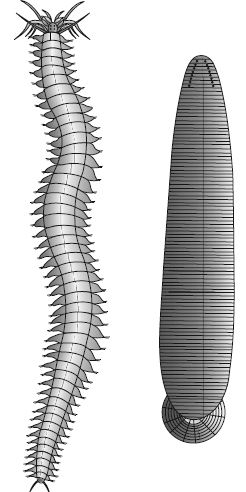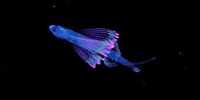Phylum Annelida may be aquatic (marine and fresh water) or terrestrial: free-living, and sometimes parasitic. They exhibit the organ-system level of body organization and bilateral symmetry. They are triploblastic, metamerically segmented and coelomate animals. Their body surface is distinctly marked out into segments or metameres (Latin, annulus: little ring) and. hence, the phylum name Annelida (Figure).

Fig: Nereis and Hirudinaria
They possess longitudinal and circular muscles which help in locomotion. Aquatic annelids like Newts possess lateral appendages, parapodia, which help in swimming. A closed circulatory system is present. Nephridia (sing, nephridium) help in osmoregulation and excretion. The neural system consists of paired ganglia (sing, ganglion) connected by lateral nerves to a double ventral nerve cord. Nereis, an aquatic form, is dioecious, but earthworms and leeches are monoecious. Reproduction is sexual.
Examples: Nereis, Pherelima (Earthworm) and Hirudinaria (Blood sucking leech).












